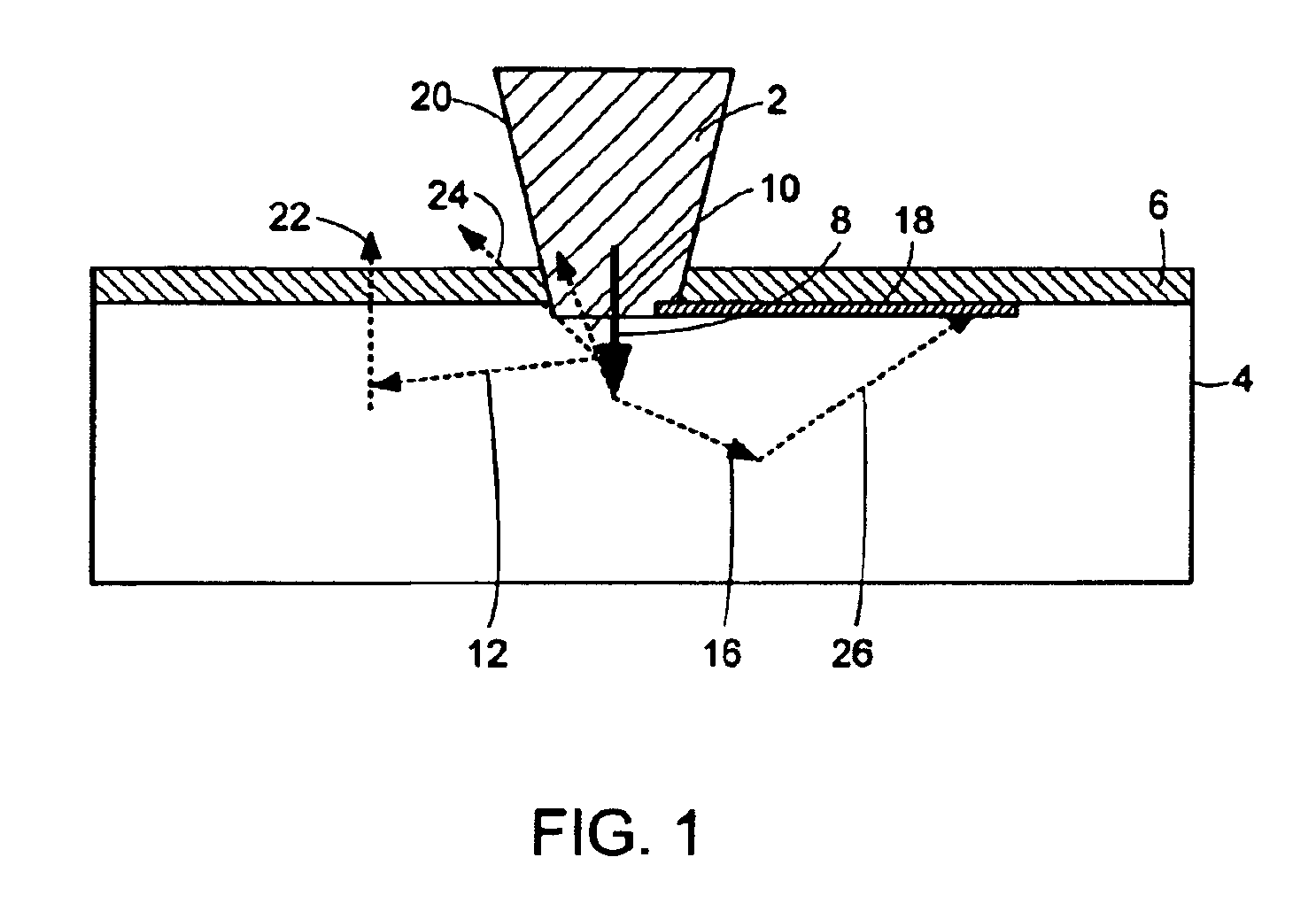Radiation shield for portable x-ray fluorescence instruments
a fluorescence instrument and radiation shielding technology, which is applied in the direction of instruments, nuclear elements, and material analysis using wave/particle radiation, etc., can solve the problems of absorbing material in the nose of the inspection instrument, unable to prevent radiation, and cannot meet the requirements of the radiation shielding inside the xrf instrument, so as to reduce radiation levels and ensure the thickness
- Summary
- Abstract
- Description
- Claims
- Application Information
AI Technical Summary
Benefits of technology
Problems solved by technology
Method used
Image
Examples
Embodiment Construction
[0018]In accordance with embodiments of the present invention, and as described now with reference to FIG. 1, shielding in the form of a collar is used to prevent multiple scattered x-rays from exiting the wall relatively far from the XRF instrument with sufficient intensity to exceed regulatory limits.
[0019]To fully appreciate why the present invention is needed and how it must be designed we need to understand the origin of the ambient radiations that result when a beam of x-rays enters material and gets Compton scattered.
The Physics of Ambient Radiation
[0020]The following discussion refers particularly to an XRF instrument used for lead paint analysis, however it should be appreciated that the conclusions drawn, and the invention described, are applicable to a wide group of applications, especially the XRF analysis of soils and plastics.
[0021]The energies of the x-rays that fluoresce lead are typically in the 20 keV range when the L x-rays of lead at 10.5 keV and 12.6 keV are use...
PUM
 Login to View More
Login to View More Abstract
Description
Claims
Application Information
 Login to View More
Login to View More - R&D
- Intellectual Property
- Life Sciences
- Materials
- Tech Scout
- Unparalleled Data Quality
- Higher Quality Content
- 60% Fewer Hallucinations
Browse by: Latest US Patents, China's latest patents, Technical Efficacy Thesaurus, Application Domain, Technology Topic, Popular Technical Reports.
© 2025 PatSnap. All rights reserved.Legal|Privacy policy|Modern Slavery Act Transparency Statement|Sitemap|About US| Contact US: help@patsnap.com



